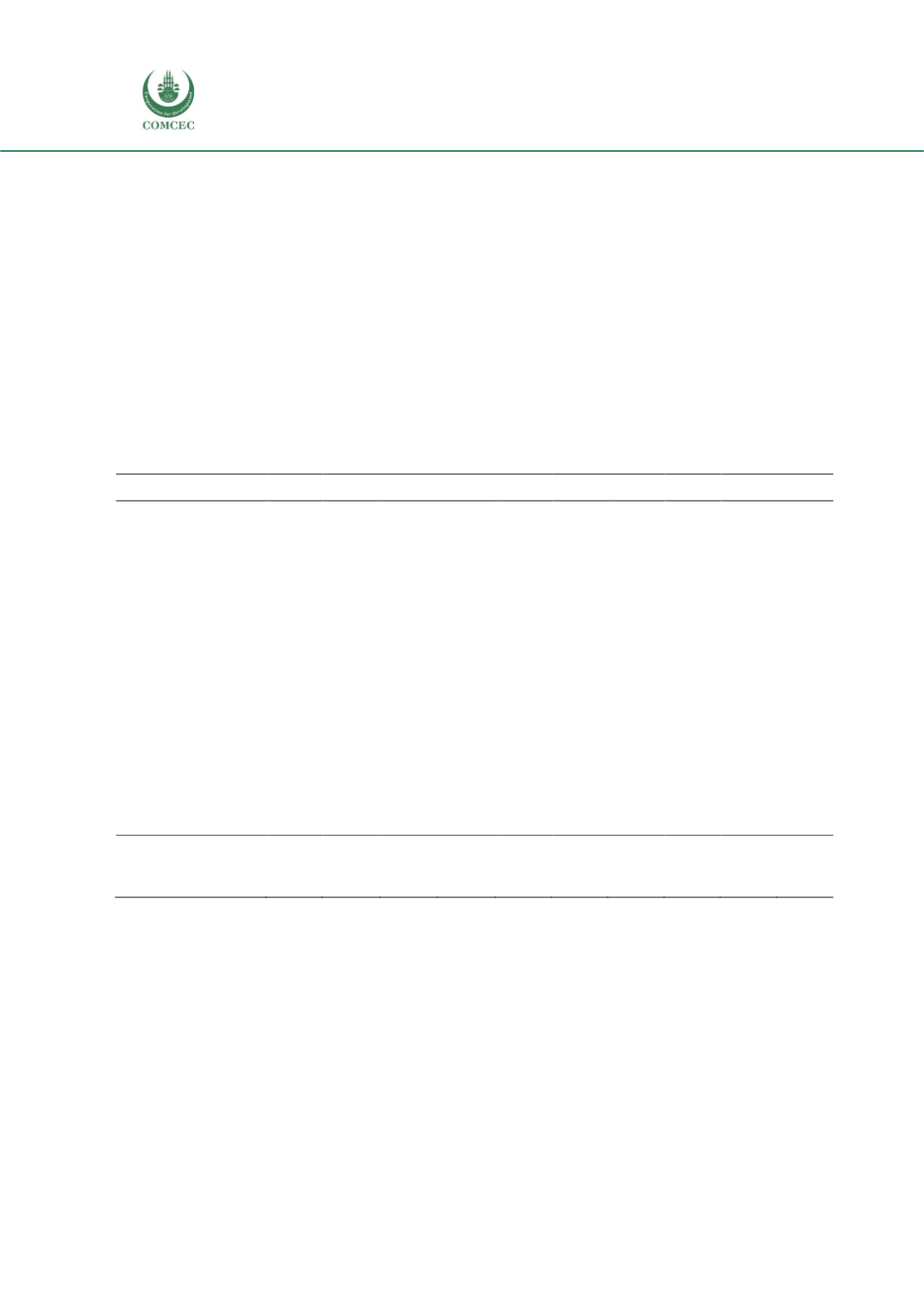

Analysis of Agri-Food Trade Structures
To Promote Agri-Food Trade Networks
In the Islamic Countries
67
This section focuses on identifying and analyzing top agricultural import products of Bangladesh
at the disaggregated level as specified in Annex 1.
Table 17shows the import their shares in
country’s total agricultural imports for the top 10 import items of Bangladesh from 2005 to
2015, which are selected based on the last 3 years average import value. The following analysis
reveals that Bangladesh’s imports of agricultural items were also highly concentrated within a
small number of product groups during the 2005-2015 period. The top 10 import items (as per
COMCEC group of classification) were representing more than 80% of country’s total
agricultural imports over the last decade, while for some years that share even higher than 90
% of total imports. These top 10 import products are Cotton; Palm oil and its fractions; Soya
bean oil and its fractions; Wheat; Cane sugar, raw; Vegetables, fresh, chilled or frozen; Oil-seeds
and oleaginous fruits; Feeding stuff for animals; Milk and milk products other than butter or
cheese; and Fruit and nuts (not including oil nuts). Among these 10 import products, the first
three, Cotton, Palm oil and Soya bean oil represent more than 50 % Bangladesh’s total
agricultural imports for most of the recent years.
Table 17:
Share of Top 10 Agricultural Products in Total Agricultural Import: 2005-2015, Percent
Products
2005
2006
2007
2008
2009
2010
2011
2012
2013
2015
All Agricultural
Products
100
100
100
100
100
100
100
100
100
100
Cotton
27
24
21
24
21
27
23
29
26
22
Palm oil and its
fractions
19
20
18
26
23
20
22
26
24
17
Soya bean oil and its
fractions
6
7
12
8
10
9
10
12
8
9
Wheat
11
11
12
8
14
11
10
3
9
10
Cane sugar, raw
7
5
4
6
9
9
9
6
8
8
Vegetables
5
6
7
4
6
5
3
5
6
7
Oil-seeds and
oleaginous fruits
3
3
3
2
4
2
2
3
5
5
Feeding stuff for
animals
2
3
3
2
2
2
2
2
3
5
Milk and milk products
other than butter or
cheese
4
3
3
5
2
2
2
3
3
3
Fruit and nuts
(not including oil nuts)
1
1
1
1
2
2
1
2
1
3
Total share of top 10
products
86
83
84
84
93
89
85
93
94
88
Rest of Agricultural
import products
14
17
16
16
7
11
15
7
6
12
Source: UN Comtrade retrieved through WITS.
Cotton is the single most import item among the agricultural imports of Bangladesh and
represents more than 1/5 of this sector’s total import value. Bangladesh’s largest export sector,
the textile and apparel industry (Bangladesh is the second largest exporter of apparel in the
world) is mostly cotton-based and Bangladesh can meet only 1% of its cotton demand from
domestic sources. This makes Bangladesh the second largest cotton importing country in the
world following China. In 2015, Bangladesh imported 2.3 billion USD worth of cotton, compared
with only 680 million USD in 2005. Although the total imports value of cotton more than tripled
over the last decade, its share in total agricultural imports showing slightly decreasing trend
following the increased import demand of other agricultural products. India, Uzbekistan, Iran,
United Sates, United Arab Emirates, Pakistan, Turkmenistan, Australia, Singapore, and United
















